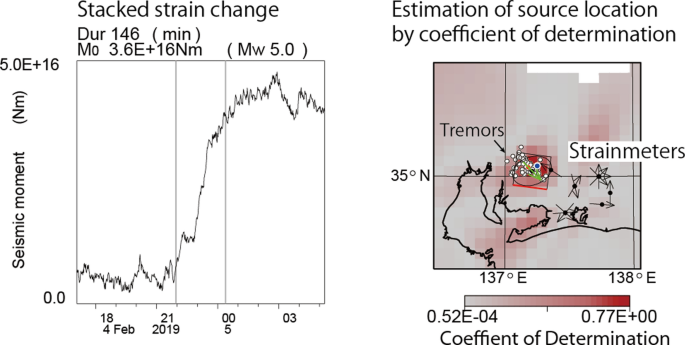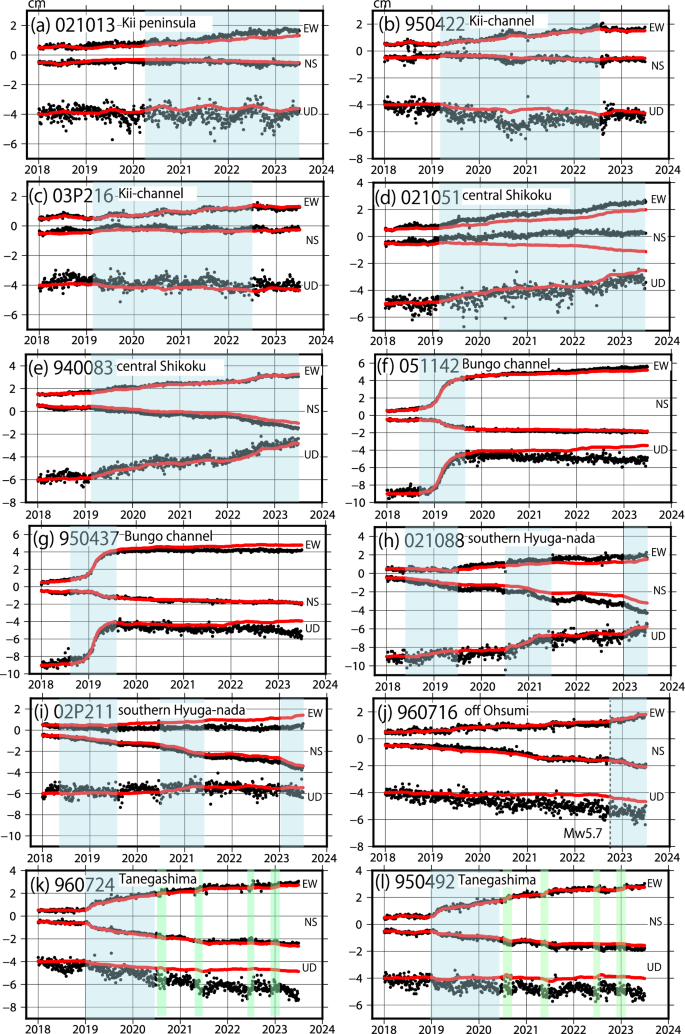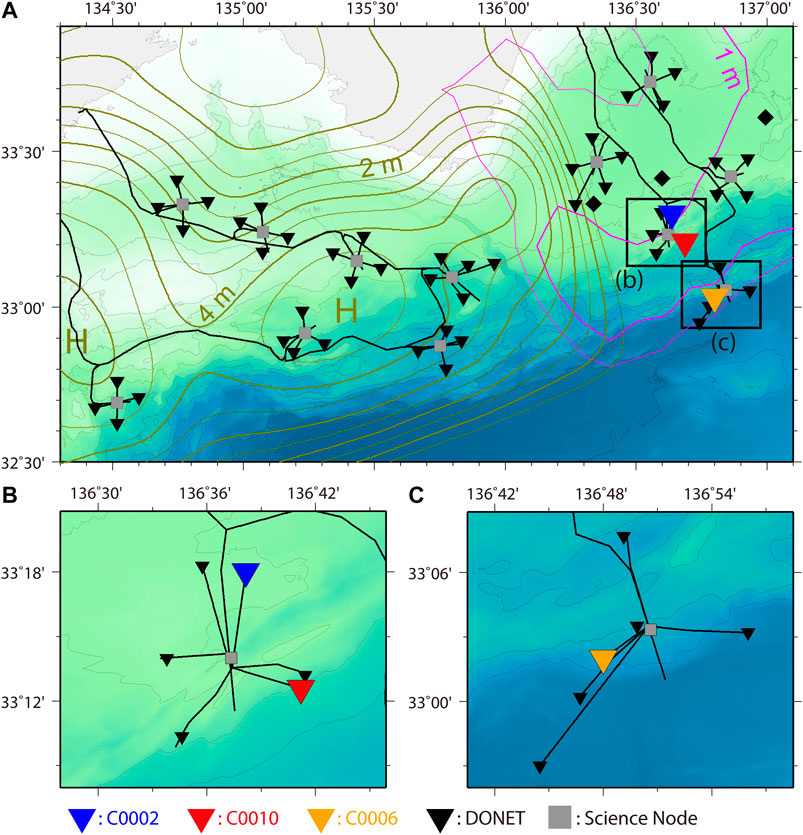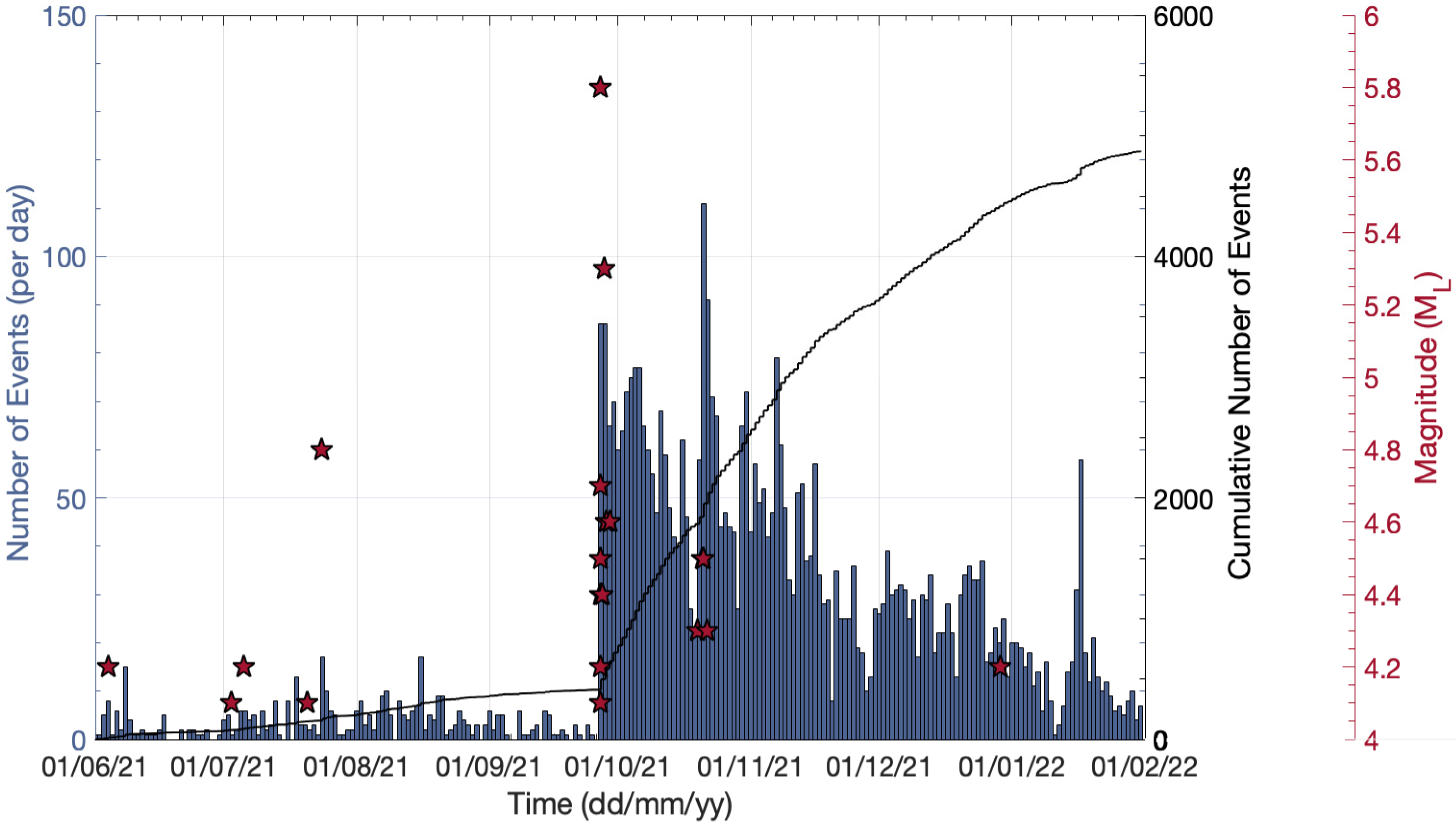Temporary slip speed increases during short-term slow slip events with durations of one to three hours, Earth, Planets and Space
By A Mystery Man Writer
Last updated 22 Sept 2024

Temporary slip speed increases with durations of 1–3 h were identified during short-term slow slip events in records of borehole and laser strainmeters in the Tokai region, Japan. They were found by searching for peaks of correlation coefficients between stacked strain data and ramp functions with rise times of 1 and 2 h. Although many of the strain steps were considered due to noise, some strain steps occurred with simultaneous activation of the deep tectonic tremors and shared source areas with the tremors. From 2016 to 2022, we observed five strain steps with simultaneous activation of tectonic tremors and coincidence of source locations with the tremors. Those strain steps occurred during short-term slow slip events and were temporary slip speed increases of the slow slip events. Those strain steps seemed to be related to successive occurrences with source migration of short-term slow slip events. The detrended strain steps corresponded to plate boundary slip events of moment magnitude around 5, which was consistent with the scaling law of slow earthquakes. Graphical Abstract
Slow-slip, slow earthquakes, period-two cycles, full and partial ruptures, and deterministic chaos in a single asperity fault - ScienceDirect
Characteristic activities of slow earthquakes in Japan. - Document - Gale Academic OneFile
Temporary slip speed increases during short-term slow slip events with durations of one to three hours, Earth, Planets and Space
2. The Rise of Earthquake Science, Living on an Active Earth: Perspectives on Earthquake Science
Slow-slip, slow earthquakes, period-two cycles, full and partial ruptures, and deterministic chaos in a single asperity fault - ScienceDirect
Source scaling relations and along‐strike segmentation of slow slip events in a 3‐D subduction fault model - Liu - 2014 - Journal of Geophysical Research: Solid Earth - Wiley Online Library
Time-dependent modeling of slow-slip events along the Nankai Trough subduction zone, Japan, within the 2018–2023 period, Earth, Planets and Space
Eight-year catalog of deep short-term slow slip events at the Nankai trough based on objective detection algorithm using strain and tilt records, Earth, Planets and Space
Effects of episodic slow slip on seismicity and stress near a subduction-zone megathrust
Frontiers Characteristics of Slow Slip Event in March 2020 Revealed From Borehole and DONET Observatories
Complex Migration of Tremor Near Cholame, CA, Resolved by Seismic Array Analysis - Inbal - 2021 - Journal of Geophysical Research: Solid Earth - Wiley Online Library
Multi-station deep learning on geodetic time series detects slow slip events in Cascadia
Applied Sciences, Free Full-Text
Recommended for you
 Under Armour Slip Speed Training Shoes White Navy Gold ALL SIZES Men's New14 Jul 2023
Under Armour Slip Speed Training Shoes White Navy Gold ALL SIZES Men's New14 Jul 2023 Under Armour SlipSpeed14 Jul 2023
Under Armour SlipSpeed14 Jul 2023 Torque vs Slip Speed of an Induction Motor with Constant Stator Flux14 Jul 2023
Torque vs Slip Speed of an Induction Motor with Constant Stator Flux14 Jul 2023- Under Armour SlipSpeed White/Black Men's Training Shoe - Hibbett14 Jul 2023
- Unisex UA SlipSpeed™ Training Shoes curated on LTK14 Jul 2023
 Slip and Slip Speed of Three-Phase Induction Motors Numerical Examples Introduction to Electrical14 Jul 2023
Slip and Slip Speed of Three-Phase Induction Motors Numerical Examples Introduction to Electrical14 Jul 2023 Slip Speed Meter-VSS14 Jul 2023
Slip Speed Meter-VSS14 Jul 2023 WD Non-Slip Speed Knob Set Of 214 Jul 2023
WD Non-Slip Speed Knob Set Of 214 Jul 2023 Under Armour SlipSpeed Mega Review14 Jul 2023
Under Armour SlipSpeed Mega Review14 Jul 2023- TCC slip data and screen shot Chevy Silverado and GMC Sierra Forum14 Jul 2023
You may also like
 1987 Hanes Her Way women's designer pink panties underwear photo ad14 Jul 2023
1987 Hanes Her Way women's designer pink panties underwear photo ad14 Jul 2023 Plain Black Boys Elasticated Pleated Trousers14 Jul 2023
Plain Black Boys Elasticated Pleated Trousers14 Jul 2023 Pink cargo pants, pink cargo jeans14 Jul 2023
Pink cargo pants, pink cargo jeans14 Jul 2023 90 Degree By Reflex Women's Missy Mesh Sports Bra Rubine Red14 Jul 2023
90 Degree By Reflex Women's Missy Mesh Sports Bra Rubine Red14 Jul 2023 Glyder Peak Leg Rosewater Stripe leggings, size S, Women's Fashion14 Jul 2023
Glyder Peak Leg Rosewater Stripe leggings, size S, Women's Fashion14 Jul 2023 Baleaf Womens Hiking Cargo Capris Outdoor Lightweight Water Resistant Pants Upf 50 Zipper Pockets Navy Blue Size L14 Jul 2023
Baleaf Womens Hiking Cargo Capris Outdoor Lightweight Water Resistant Pants Upf 50 Zipper Pockets Navy Blue Size L14 Jul 2023 Braun Silk-épil 9 Flex 9100 BS 40 Tweezers Gold, White14 Jul 2023
Braun Silk-épil 9 Flex 9100 BS 40 Tweezers Gold, White14 Jul 2023 Victoria's Secret14 Jul 2023
Victoria's Secret14 Jul 2023 Disney's Frozen 2 Girls 4-8 'Unboxing' 12 Days of Underwear Multi14 Jul 2023
Disney's Frozen 2 Girls 4-8 'Unboxing' 12 Days of Underwear Multi14 Jul 2023 Women's Eco-friendly Hoodie - Into The Forest - Natural Clothing Company14 Jul 2023
Women's Eco-friendly Hoodie - Into The Forest - Natural Clothing Company14 Jul 2023











